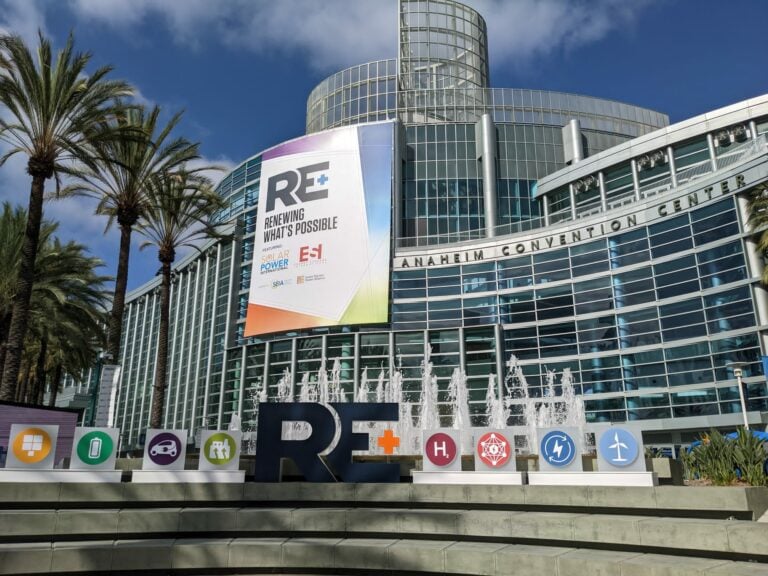
The RE+ solar tradeshow in Anaheim, California is winding down on the fourth day of proceedings, with attendees slowly streaming out of a venue which has been abuzz with the excitement bestowed by the Inflation Reduction Act (IRA), although many short-term questions remain.
PV Tech has been on the ground for every day of the event and previously reported how the IRA has taken centre stage at this year’s RE+. From manufacturers and developers to O&M companies and software providers, attendees have found it hard to understate the impact of the US$369 billion package.
Unlock unlimited access for 12 whole months of distinctive global analysis
Photovoltaics International is now included.
- Regular insight and analysis of the industry’s biggest developments
- In-depth interviews with the industry’s leading figures
- Unlimited digital access to the PV Tech Power journal catalogue
- Unlimited digital access to the Photovoltaics International journal catalogue
- Access to more than 1,000 technical papers
- Discounts on Solar Media’s portfolio of events, in-person and virtual
But PV Tech has also been eager to stress that the IRA’s impact won’t truly be felt until 2024, with the module supply constraints of the past couple of years set to continue in the short term.
In the here and now, then, solar stakeholders need to structure their finances and operations so as to be prepared to exploit the most from the IRA’s incentives when the start to make a difference. Several large US developers have told PV Tech they are already going into preparation mode and designing strategies to best take advantage of the IRA.
The IRA will incentivise manufacturing and improve project economics but there are still several barriers to greater solar installations, especially in the US. First is to address the US’ interconnection problems which continue to push up project costs and uncertainty as well as causing increasing delays. PV Tech has reported on potential solutions to the US’ grid woes following events and conversations held at RE+.
There is progress being made on this front, but it is slow. The IRA containers US$2 billion for transmission improvements and the Department of Energy’s (DOE) i2X initiative will supply some valuable insights and a five year road map. Meanwhile, Senator Joe Machin’s Energy Independence and Security Act of 2022, published today, will accelerate the construction of transmission infrastructure and provide greater permitting powers, even if it does support gas pipelines too.
Aside from transmission and interconnection, skills and labour shortages across the US solar sector were also a topic of hot discussion at RE+. While work on this front is underway and additional incentives in the IRA will help drive up workforce levels, addressing labour shortages and plugging skills gaps is critical at all stages of the supply chain, from module makers to residential installers. Two years is not a lot of time to do this.
On top of this, you have a good deal of uncertainty regarding how the IRA will be implemented in practice, with a lack of specific details when it comes to domestic content requirements or accessing adders under the scheme causing the greatest legal uncertainty in the US PV sector.
All in all, however, there has been an overwhelming sense of hope, optimism and excitement about the future of US solar at this year’s show, with a truly transformation support package set to fundamentally reshape the country’s, and perhaps the world’s, solar landscape.







